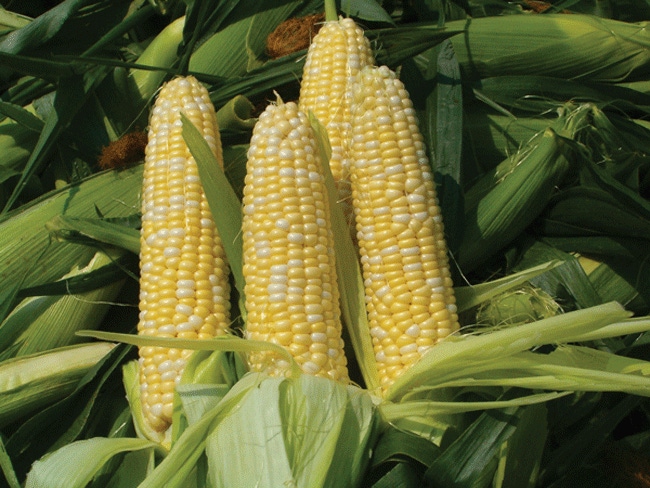July 13, 2012

Warm weather and generally good growing conditions translate into large volumes of high-quality fresh commercial vegetables and continuing low prices for producers, according to the latest USDA Vegetables and Melons Outlook Report.
Prices in the first quarter of 2012 were almost 50 percent lower than the previous year.
Lettuce and tomato prices were particularly hard-hit with declinesof more than 60 percent, and there are some reports of economic abandonment in tomatoes.
Snap bean prices were more resilient with first quarter prices down less than 10 percent over the previous year.
While some improvement is projected for fresh vegetable prices in the second and third quarters of 2012, prices will likely still remain below 2011 levels.
April shipments of most vegetable crops eased from the high levels of winter and early spring, although when compared with 2011, volumes remain high in many cases.
Again, tomatoes are notable with a 40-percent increase in shipments of field Roma tomatoes and a 16 percent increase in shipments of all greenhouse tomatoes in April 2012 over the previous year.
Shipments of round field tomatoes in April were slightly lower than the same month in 2011. Continued high availability from imports and greenhouse production with the subsequent downward pressure on prices likely limited shipments of field-grown round tomatoes as growers opted to forgo harvest.
Although acreage planted to round field-grown tomatoes has been trending downward over time, shipments were up 17 percent in the first quarter of 2012 compared to 2011.
Spring shipments of dry bulb onions are lower than the previous year. Warm weather allowed an early start to the sweet onion season in both Georgia and Texas. Smaller sizes and lower volumes were reported in some areas in response to problems with downy mildew.
Onion prices showed some recovery from the lows reported earlier in 2012. The May 2012 Producer Price Index for dry bulb onions was up almost 60 percent over the March 2012 index and almost 33 percent compared to May 2011.
Prices continue to fall
In the first half of 2012, grower prices for fresh-market tomatoes throughout the United States, Canada and Mexico have remained low across all tomato categories.
All major growing regions had good weather throughout the past winter and early spring 2012, unlike the past few years when freezes in either Florida or Mexico reduced volume and bolstered prices.
Florida and California, combined, produce a year-round supply of mature greentomatoes (with a small quantity of vine-ripes).
The Mexican states of Sinaloa andBaja California, combined, produce a year-round supply of vine-ripes with smallquantities of mature greens in Sinaloa.
The Florida field tomato season runs from October through June. Florida and Mexico historically compete for the U.S. winter and early spring field tomato market.
Field tomato imports from Mexico peak in the winter when southern Florida is the predominant U.S. producer. Florida tomatoes then dominate the field market during the spring as Mexican field production seasonally declines.
California produces from May through November.
Growers in the Baja California peninsula of Mexico, also export field tomatoes to the United States during the summer and fall months.
Long-term production trends for field tomatoes are generally down or stagnant in both the United States and Mexico.
Florida round and Roma field tomato production peaked in 1992 and declined 51 percent by 2011. Planted acreage peaked in 1989 and declined 48 percent by 2011.
In 2011, round and Roma tomatoes accounted for 84 percent of production in Florida.
According to preliminary data, net domestic use of fresh-market vegetables fell slightly (less than 0.5 percent) to 44.6billion pounds in 2011.
On a per-person basis, use of fresh vegetables fell just under1 percent to 142.8 pounds. With this slight decline, average per capita use since2007 remains at just under 143 pounds compared to more than 148 pounds average perperson between 2003 and 2007.
Including estimates for fresh potatoes and fresh mushrooms, per capita use of all fresh vegetables totaled more than 180 pounds in 2011, down 1.4 percent from a year earlier.
Little change is currently expected in 2012 fresh-vegetable per-capita disappearance although increased production and lower prices driven by good growing conditions in most regions may provide a boost to 2012 disappearance.
In 2011, net domestic use increased the most for broccoli, artichokes, mushrooms, cauliflower, snap beans and squash.
Because of lower domestic production and increased exports, per capita use continued to decline for items such as cabbage, sweet corn and celery.
In 2012, per-capita use of all fresh vegetables is expected to remain near the levels of a year earlier as recovery in use of crops such as asparagus and cabbage offsets potential reductions for cucumbers, artichokes and broccoli.
Consumer interest in fresh-market asparagus continues to expand. Because of year-round imports, consumers (who also have shown increased interest in high-value products such as asparagus, organics, and greenhouse-produced vegetables) now have access to fresh asparagus every month of the year.
Consumption of fresh broccoli continues to expand, driven by high levels of production and imports in 2011.
About the Author(s)
You May Also Like




